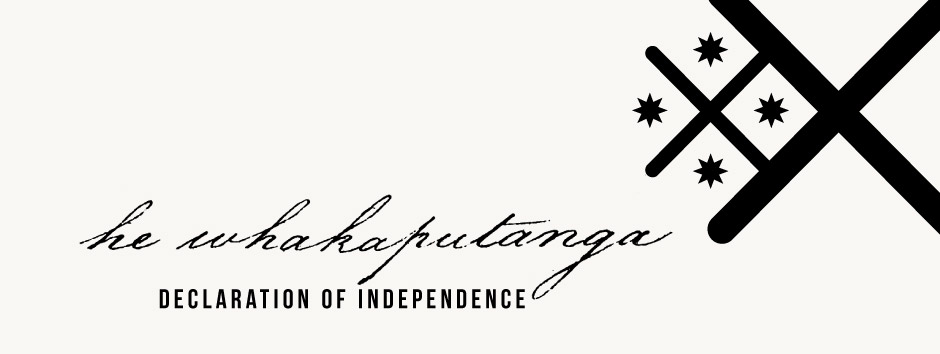Signing details
Respected for his role as a peacemaker, Te Wharerahi (sometimes known as Te Wharenui) was an important member of Ngāi Tawake, a hapū of Ngāpuhi’s northern alliance. He was the older brother of Rewa and Moka, and was married to Tari, the sister of senior Hokianga chiefs Tāmati Wāka Nene and Eruera Maihi Patuone – all signatories to He Whakaputanga.
The Reverend Henry Williams described Te Wharerahi as 'an excellent character… who is termed the Peace-Maker by the Natives, as he is thus engaged on all occasions.' [1] In November 1827 Te Wharerahi tried to prevent war between the people of Waikare and Te Koikoi, and in February 1828 dampened rumours of a Ngāi Tawake raid on the people of Kawakawa. He and his brother-in-law Patuone intervened to protect Wesleyan (Methodist) missionaries when their mission was attacked in 1828. Again, during Ngāpuhi inter-hapū conflicts in 1828 and 1830, Te Wharerahi was there to negotiate.
Williams’s superior, Samuel Marsden, was therefore disappointed when Te Wharerahi took part in an 1832 war expedition against Ngāti Whātua. However, in 1835 Williams encountered Te Wharerahi, 'our venerable friend', at the coastal settlement of Whakatīwai, and wrote that Te Wharerahi 'spoke like a noble man, with considerable dignity and grace, and what he said tended to quiet many fears respecting Ngapuhi.' [2]
In 1831 Te Wharerahi was one of 13 rangatira to write a letter to King William IV, which he signed with an elaborate tohu or mark. Four years later, on 28 October 1835, Te Wharerahi and his brothers all signed He Whakaputanga. He is said to have been in his late fifties at the time.
However, in 1840 Te Wharerahi disagreed with Rewa and Moka, and supported the governor during the signing of Te Tiriti o Waitangi. Te Wharerahi said, 'Is it not good to be in peace? We will have this man as our Governor. What! Turn him away! Say to this man of the Queen, Go back! No, no.' [3] According to historian Anne Salmond, the speech was persuasive, and proved a turning point in the discussions among the assembled chiefs. He signed the Waitangi sheet on 6 February 1840.
[1] Missionary Register [Sections relating to New Zealand] 1829, p.459, Early New Zealand Books.
[2] Lawrence M. Rogers (ed.), The Early Journals of Henry Williams, Senior Missionary in New Zealand of the Church Missionary Society, 1826–40, Pegasus Press, Christchurch, 1961, p.168.
[3] William Colenso, The Authentic and Genuine History of the Signing of the Treaty of Waitangi, New Zealand, February 5 and 6, 1840: Being a Faithful and Circumstantial, Though Brief, Narration of Events Which Happened on That Memorable Occasion: With Copies of the Treaty in English and Maori and of the Three Early Proclamations Respecting the Founding of the Colony, George Didsbury, Government Printer, Wellington, 1890.


Community contributions